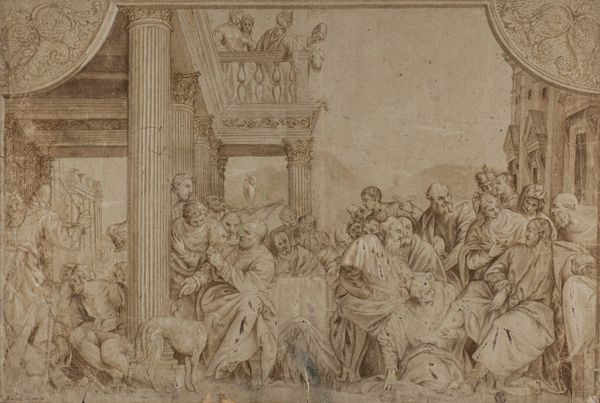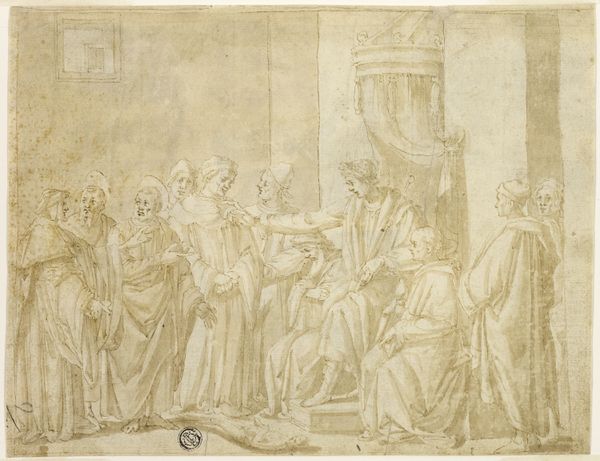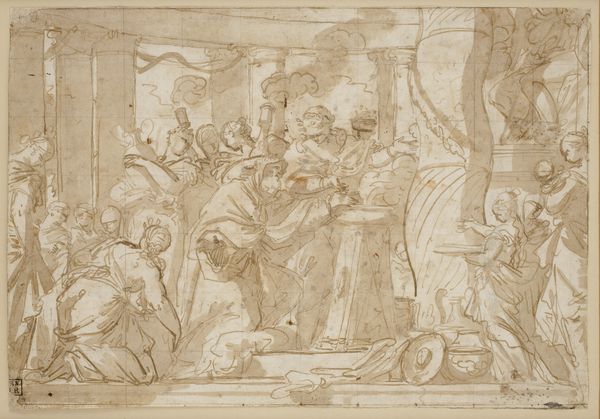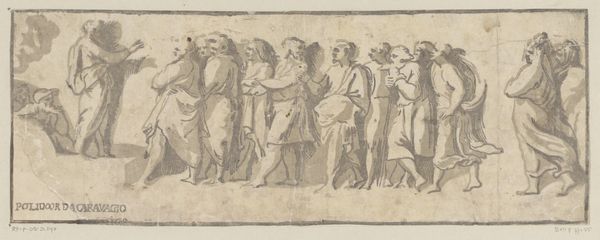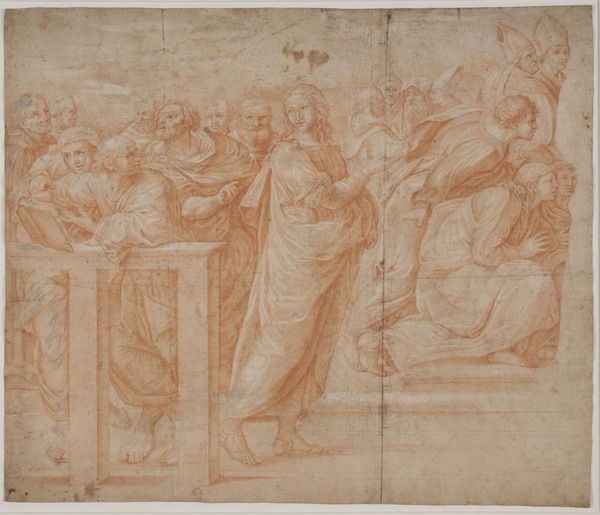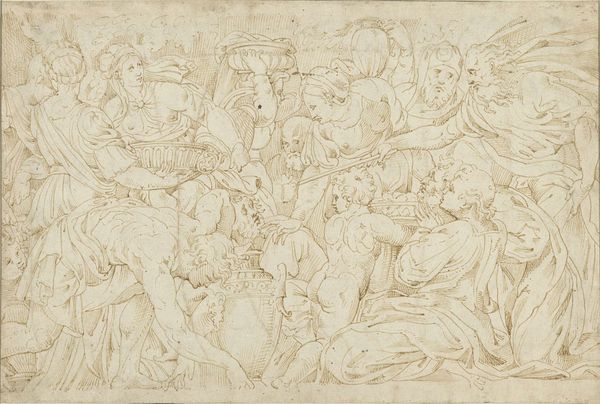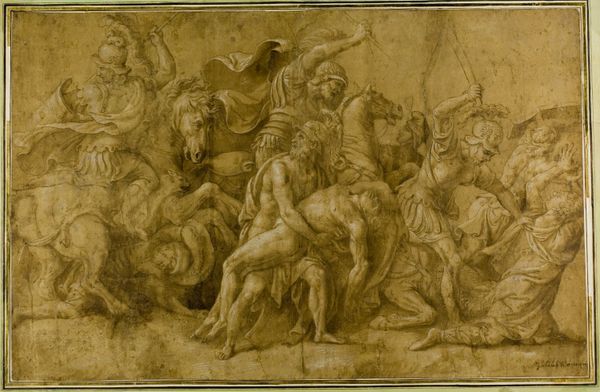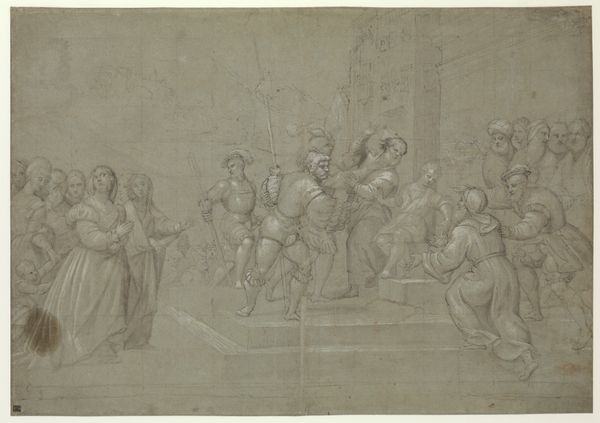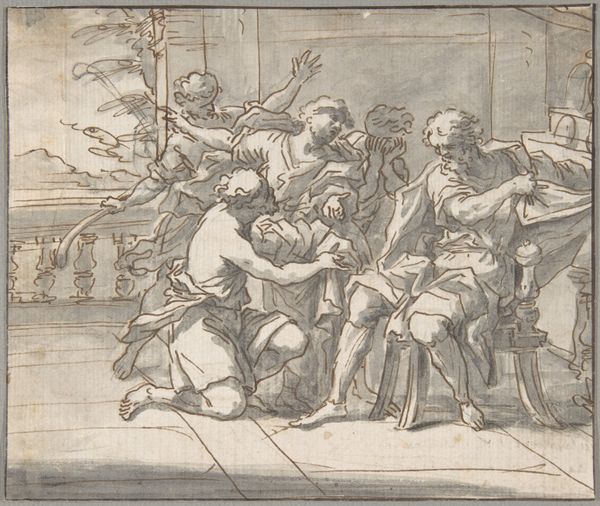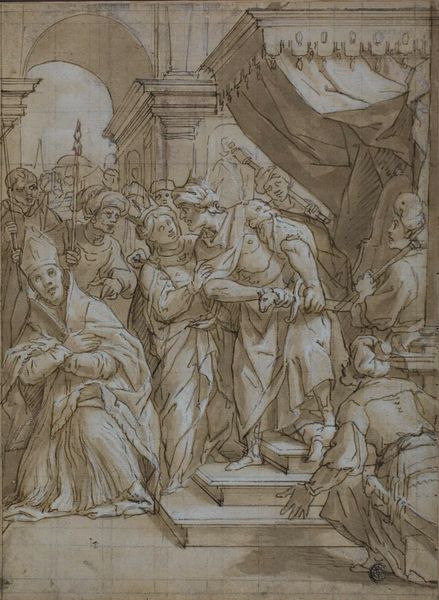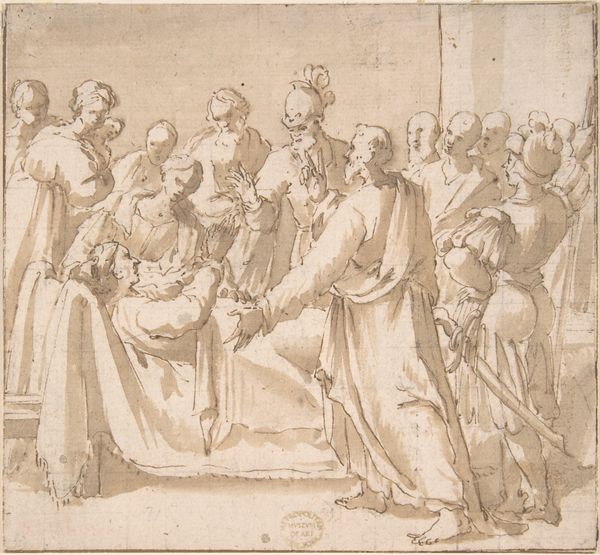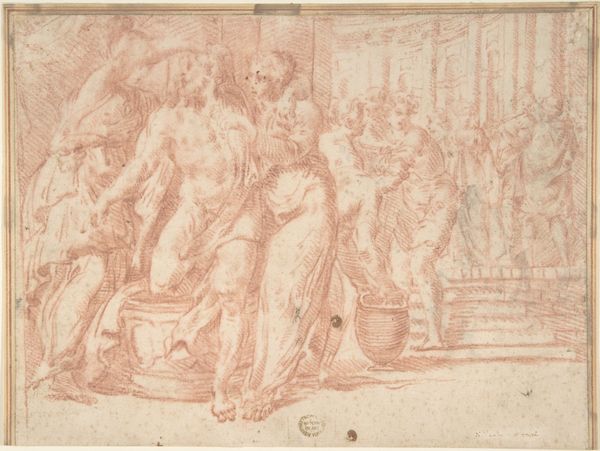
drawing, paper, ink, graphite, charcoal
#
portrait
#
drawing
#
charcoal drawing
#
figuration
#
paper
#
11_renaissance
#
ink
#
coloured pencil
#
group-portraits
#
graphite
#
charcoal
#
history-painting
#
italian-renaissance
Dimensions: 200 × 312 mm
Copyright: Public Domain
Editor: This is a drawing entitled "Last Supper," made by Raphael, and currently residing here at the Art Institute of Chicago. It seems to be executed in graphite, charcoal, and ink on paper. What strikes me most is the unfinished quality, lending an air of intimacy to such an iconic scene. How do you interpret this work? Curator: The unfinished quality, as you point out, is quite significant. It invites us to consider the drawing not merely as a representation of a biblical scene, but as a space of negotiation and process. How might the lack of completion challenge the traditionally masculine narratives often associated with Renaissance art? Editor: That's a great point. I hadn't considered how its incomplete nature pushes against traditional notions of Renaissance mastery and maybe offers a different kind of insight. But what kind of insight exactly? Curator: Well, if we view this through the lens of, say, feminist art history, we could argue that the “unfinished” subverts the demand for a complete, authoritative statement, echoing the disruption of patriarchal structures. The lack of a polished, final image allows for a more open interpretation, disrupting the established religious power dynamics the scene represents. Editor: I see. So, instead of seeing a clear, defined power structure, we're presented with something more ambiguous. The figures aren’t idealized, their faces showing vulnerability and, dare I say, uncertainty. Is Raphael possibly questioning the conventional narratives around faith and authority? Curator: Precisely. Consider the composition – the crowded table, the shifting gazes. This departs from the hyper-masculine vision. By showing the disciples in this state of unrest, Raphael humanizes them. It challenges the construction of flawless heroes prevalent during the Renaissance. How might we understand the emotional landscape as a subtle act of resistance against rigid societal roles? Editor: That’s given me a completely different perspective. It is not just about illustrating a scene, it is challenging the ideals and social norms it represents! Thank you! Curator: Absolutely! It's about seeing beyond the surface to uncover the subtle ways artists engage with the socio-political currents of their time, encouraging dialogue about identity, representation, and power.
Comments
No comments
Be the first to comment and join the conversation on the ultimate creative platform.
